
Here are the different ways to get column names from a table in Laravel.
Suppose we create a table named Students in a MySQL database using the following query:
CREATE TABLE students( id INTEGER NOT NULL PRIMARY KEY, name VARCHAR(10) NOT NULL, email VARCHAR(15) NOT NULL, created_at VARCHAR(27) NOT NULL, updated_at VARCHAR(27) NOT NULL, address VARCHAR(3) NOT NULL );
You can use the DESC command to get its complete details -
mysql> desc students; +------------+-------------+------+-----+---------+-------+ | Field | Type | Null | Key | Default | Extra | +------------+-------------+------+-----+---------+-------+ | id | int | NO | PRI | NULL | | | name | varchar(15) | NO | | NULL | | | email | varchar(20) | NO | | NULL | | | created_at | varchar(27) | YES | | NULL | | | updated_at | varchar(27) | YES | | NULL | | | address | varchar(30) | NO | | NULL | | | age | int | YES | | NULL | | +------------+-------------+------+-----+---------+-------+ 7 rows in set (0.08 sec)
Use Schema class
Using the schema class, you can create and update tables in Laravel. To use schema classes, add the following classes to your controller.
use Illuminate\Support\Facades\Schema;
Example
This is a working example using the schema class -
<?php
namespace App\Http\Controllers;
use Illuminate\Http\Request;
use Illuminate\Support\Facades\Schema;
class StudentController extends Controller {
public function index() {
$columns = Schema::getColumnListing('students');
print_r($columns);
}
}
Output
The output of the above code is as follows.
Array( [0] => id [1] => name [2] => email [3] => created_at [4] => updated_at [5] => address )
Use Model class
The Model class in Laravel represents the table in the database. For example, if you have student table, the model name will be student, for user, the model name will be user, and for employee, the model name will be "employee". Table names must be plural and model names must be singular. This is the pattern to follow, but this does not prevent you from using a naming convention of your choice for table names and model names.
Create a student model as follows -
<?php
namespace App\Models;
use Illuminate\Database\Eloquent\Factories\HasFactory;
use Illuminate\Database\Eloquent\Model;
class Student extends Model {
use HasFactory;
protected $fillable = ['name','email','address'];
}
Now use the model in your controller to get the column names -
<?php
namespace App\Http\Controllers;
use Illuminate\Http\Request;
use App\Models\Student;
class StudentController extends Controller {
public function index() {
$student = Student::first();
$table_columns = array_keys(json_decode($student, true));
print_r($table_columns);
}
}
Output
The output of the above code is.
Array( [0] => id [1] => name [2] => email [3] => created_at [4] => updated_at [5] => address )
Example
You can also use the database appearance class shown inside the controller -
<?php
namespace App\Http\Controllers;
use Illuminate\Http\Request;
use DB;
class StudentController extends Controller {
public function index() {
$table = DB::table('students')->get();
$cols = array_keys(json_decode(json_encode($table[0]), true));
print_r($cols);
}
}
Output
The output of the above code is -
Array ( [0] => id [1] => name [2] => email [3] => created_at [4] => updated_at [5] => address )
Example
Another way to get columns using a database look and feel is -
<?php
namespace App\Http\Controllers;
use Illuminate\Http\Request;
use DB;
class StudentController extends Controller {
public function index() {
$columns_names = [];
$tableDet = DB::select("SHOW COLUMNS FROM students");
foreach($tableDet as $column) {
$columns_names[$column->Field] = '';
}
print_r($columns_names);
}
}
Output
The output of the above code is.
Array ( [id] => [name] => [email] => [created_at] => [updated_at] => [address] => )
The above is the detailed content of How to select all column names in a table in Laravel?. For more information, please follow other related articles on the PHP Chinese website!
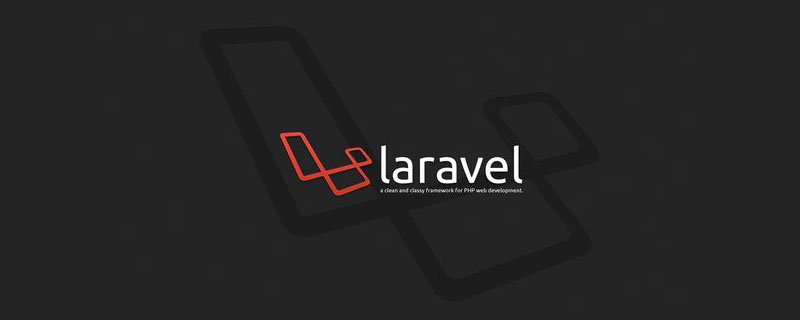 laravel单点登录方法详解Jun 15, 2022 am 11:45 AM
laravel单点登录方法详解Jun 15, 2022 am 11:45 AM本篇文章给大家带来了关于laravel的相关知识,其中主要介绍了关于单点登录的相关问题,单点登录是指在多个应用系统中,用户只需要登录一次就可以访问所有相互信任的应用系统,下面一起来看一下,希望对大家有帮助。
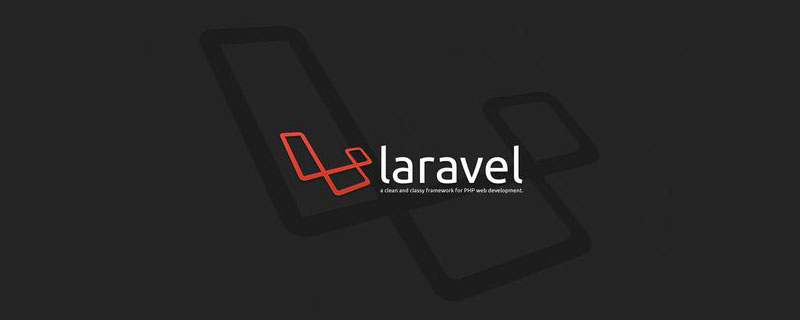 一起来聊聊Laravel的生命周期Apr 25, 2022 pm 12:04 PM
一起来聊聊Laravel的生命周期Apr 25, 2022 pm 12:04 PM本篇文章给大家带来了关于laravel的相关知识,其中主要介绍了关于Laravel的生命周期相关问题,Laravel 的生命周期从public\index.php开始,从public\index.php结束,希望对大家有帮助。
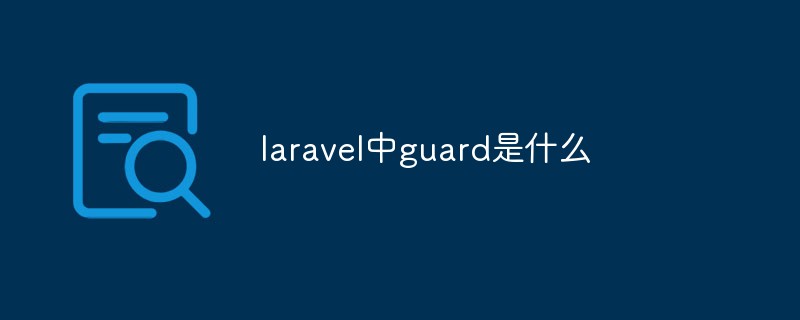 laravel中guard是什么Jun 02, 2022 pm 05:54 PM
laravel中guard是什么Jun 02, 2022 pm 05:54 PM在laravel中,guard是一个用于用户认证的插件;guard的作用就是处理认证判断每一个请求,从数据库中读取数据和用户输入的对比,调用是否登录过或者允许通过的,并且Guard能非常灵活的构建一套自己的认证体系。
 laravel中asset()方法怎么用Jun 02, 2022 pm 04:55 PM
laravel中asset()方法怎么用Jun 02, 2022 pm 04:55 PMlaravel中asset()方法的用法:1、用于引入静态文件,语法为“src="{{asset(‘需要引入的文件路径’)}}"”;2、用于给当前请求的scheme前端资源生成一个url,语法为“$url = asset('前端资源')”。
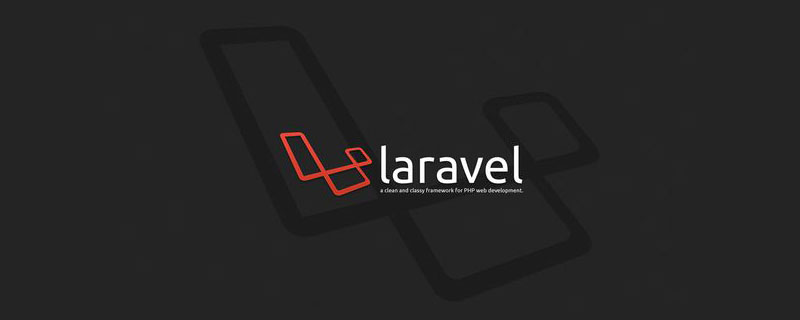 实例详解laravel使用中间件记录用户请求日志Apr 26, 2022 am 11:53 AM
实例详解laravel使用中间件记录用户请求日志Apr 26, 2022 am 11:53 AM本篇文章给大家带来了关于laravel的相关知识,其中主要介绍了关于使用中间件记录用户请求日志的相关问题,包括了创建中间件、注册中间件、记录用户访问等等内容,下面一起来看一下,希望对大家有帮助。
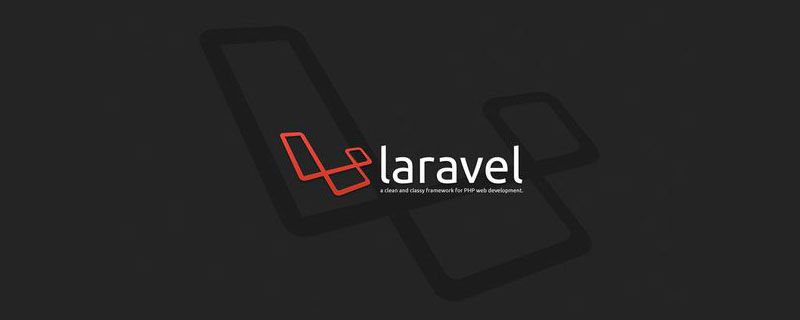 laravel中间件基础详解May 18, 2022 am 11:46 AM
laravel中间件基础详解May 18, 2022 am 11:46 AM本篇文章给大家带来了关于laravel的相关知识,其中主要介绍了关于中间件的相关问题,包括了什么是中间件、自定义中间件等等,中间件为过滤进入应用的 HTTP 请求提供了一套便利的机制,下面一起来看一下,希望对大家有帮助。
 laravel的fill方法怎么用Jun 06, 2022 pm 03:33 PM
laravel的fill方法怎么用Jun 06, 2022 pm 03:33 PM在laravel中,fill方法是一个给Eloquent实例赋值属性的方法,该方法可以理解为用于过滤前端传输过来的与模型中对应的多余字段;当调用该方法时,会先去检测当前Model的状态,根据fillable数组的设置,Model会处于不同的状态。
 laravel路由文件在哪个目录里Apr 28, 2022 pm 01:07 PM
laravel路由文件在哪个目录里Apr 28, 2022 pm 01:07 PMlaravel路由文件在“routes”目录里。Laravel中所有的路由文件定义在routes目录下,它里面的内容会自动被框架加载;该目录下默认有四个路由文件用于给不同的入口使用:web.php、api.php、console.php等。


Hot AI Tools

Undresser.AI Undress
AI-powered app for creating realistic nude photos

AI Clothes Remover
Online AI tool for removing clothes from photos.

Undress AI Tool
Undress images for free

Clothoff.io
AI clothes remover

AI Hentai Generator
Generate AI Hentai for free.

Hot Article

Hot Tools

PhpStorm Mac version
The latest (2018.2.1) professional PHP integrated development tool

DVWA
Damn Vulnerable Web App (DVWA) is a PHP/MySQL web application that is very vulnerable. Its main goals are to be an aid for security professionals to test their skills and tools in a legal environment, to help web developers better understand the process of securing web applications, and to help teachers/students teach/learn in a classroom environment Web application security. The goal of DVWA is to practice some of the most common web vulnerabilities through a simple and straightforward interface, with varying degrees of difficulty. Please note that this software

SecLists
SecLists is the ultimate security tester's companion. It is a collection of various types of lists that are frequently used during security assessments, all in one place. SecLists helps make security testing more efficient and productive by conveniently providing all the lists a security tester might need. List types include usernames, passwords, URLs, fuzzing payloads, sensitive data patterns, web shells, and more. The tester can simply pull this repository onto a new test machine and he will have access to every type of list he needs.

Safe Exam Browser
Safe Exam Browser is a secure browser environment for taking online exams securely. This software turns any computer into a secure workstation. It controls access to any utility and prevents students from using unauthorized resources.

MinGW - Minimalist GNU for Windows
This project is in the process of being migrated to osdn.net/projects/mingw, you can continue to follow us there. MinGW: A native Windows port of the GNU Compiler Collection (GCC), freely distributable import libraries and header files for building native Windows applications; includes extensions to the MSVC runtime to support C99 functionality. All MinGW software can run on 64-bit Windows platforms.







